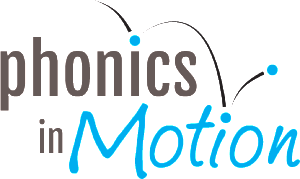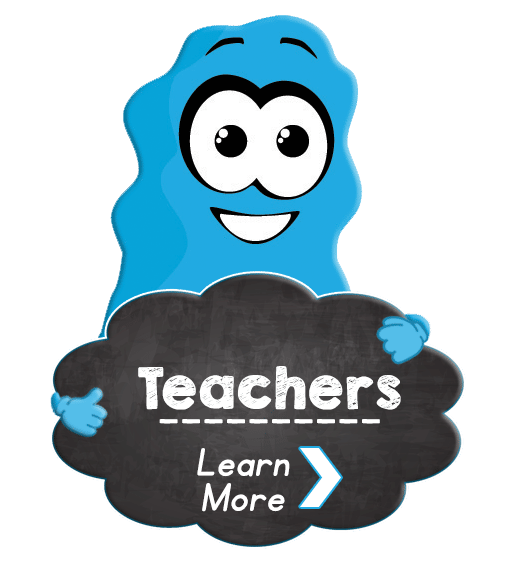Early Reading Strategies: Enhancing Reading Proficiency and Comprehension
Reading strategies are crucial to empower individuals to access information, explore new ideas, and engage with the world around them. To become proficient readers, students need more than just the ability to decode words; they require a range of strategies that help them navigate texts, comprehend meaning, and extract valuable information. In this article, we will explore the importance of using reading strategies and how they contribute to enhancing reading proficiency and comprehension.
What Are Reading Strategies?
Reading strategies are instructional techniques and approaches that help students become proficient readers. These strategies provide students with specific tools and methods to decode words, understand meaning, and engage with the text. By using evidence-based strategies, teachers can support students’ literacy development, address individual needs, and promote active and meaningful reading experiences.
Reading Strategies For Building Reading Proficiency
Reading strategies are essential tools that support the development of reading proficiency skills. Here’s why we need to incorporate them into our teaching practices:
Skill 1. Decoding Skills: Unlock Words With Systematic Approaches
Reading strategies provide students with systematic approaches to decode words accurately and efficiently. Strategies such as phonics instruction, sight word recognition, and word analysis techniques enable students to unlock the meaning of unfamiliar words and build their reading fluency.
Skill 2. Vocabulary Expansion: Enhance Word Knowledge
Effective reading strategies focus on expanding students’ vocabulary knowledge. By using techniques like context clues, word mapping, and explicit vocabulary instruction, students can enhance their understanding of word meanings, make connections between words, and access more sophisticated texts.
Skill 3. Fluency Development: Read With Speed And Expression
Reading strategies play a crucial role in developing reading fluency. Techniques like repeated reading, choral reading, and guided oral reading help students improve their reading speed, accuracy, and prosody. Fluent readers can comprehend text effortlessly, which allows them to focus on understanding the content and making connections.
Skill 4. Comprehension Enhancement: Help Students Actively Engage With Text
Reading strategies equip students with the tools to actively engage with texts and extract meaning. Comprehension strategies such as predicting, visualizing, questioning, and summarizing guide students in making connections, analyzing text structures, and monitoring their understanding. These strategies promote deeper comprehension and critical thinking skills.
Reading Strategies To Promote Active and Meaningful Reading
Reading strategies foster active and meaningful reading experiences by:
Engagement: Make Reading A Dynamic and Interactive Process
Implementing reading strategies increases student engagement by making reading a dynamic and interactive process. Strategies that involve visual aids, discussions, and hands-on activities grab students’ attention and encourage active participation.
Motivation: Ignite A Lifelong Love Of Learning
Reading strategies help ignite students’ motivation and interest in reading. When students have the tools to decode words, comprehend texts, and make connections, they feel empowered and experience the joy of successful reading, which fosters a lifelong love for books and learning.
Personalization:Create Connection With A Text
Reading strategies allow students to personalize their reading experiences. By incorporating strategies that encourage making connections to prior knowledge, relating to characters, and exploring personal experiences, students develop a deeper connection with the text and find relevance and meaning in what they read.
Independence: Empower Students To Be Confident Readers
Reading strategies empower students to become independent readers. As students internalize strategies, they become confident in their ability to tackle challenging texts, solve unfamiliar words, and extract meaning independently. This independence leads to increased autonomy and a sense of ownership over their reading experiences.
Meeting Diverse Learning Needs Through Differentiated Reading Strategies
Effective instructional methods are crucial for meeting the diverse learning needs of students. They:
Differentiate Instruction: Tailor Support To Individual Needs
Reading strategies allow teachers to tailor instruction to individual students’ needs, or differentiate instruction. By incorporating a range of strategies, teachers can provide targeted support for struggling readers, English language learners, and students with learning differences, ensuring that every student receives the necessary scaffolding and practice to succeed.
Address Skill Gaps: Identify and Bridge Gaps in Reading Abilities
Reading strategies help identify and address skill gaps in students’ reading abilities. Through ongoing assessment and data-driven instruction, teachers can determine specific areas where students require additional support and implement strategies to bridge those gaps effectively.
Promote Inclusive Education: Provide Access To Literacy For All
Reading strategies promote inclusive education by providing access to literacy for all students. Strategies that focus on multi-sensory approaches, visual aids, and differentiated instruction ensure that students with diverse learning styles, abilities, and backgrounds can engage with reading materials effectively.
Support Lifelong Learning: Equip Students For Continuous Growth
By equipping students with a repertoire of reading strategies, educators empower them to become lifelong learners. Reading strategies serve as valuable tools beyond the classroom, enabling individuals to access and critically evaluate information, engage with literature, and continue learning throughout their lives.
Phonics in Motion: Enhance Reading Strategies With Multisensory Literacy Instruction
Reading strategies are indispensable for developing reading proficiency, promoting active and meaningful reading experiences, and meeting diverse learning needs. By incorporating these strategies into our teaching practices, we empower students to become proficient readers who can extract meaning from texts, engage with content, and develop a lifelong love for reading
Phonics in Motion is an innovative program that revolutionizes reading instruction by integrating multisensory techniques. This comprehensive program combines kinesthetic movement, music, and visual cues to engage multiple senses and reinforce reading skills effectively. Let’s delve into the various components of Phonics in Motion and how they contribute to enhancing literacy development.
Feature 1. Multisensory Techniques: Promoting Active Learning and Skill Reinforcement
One of the key strengths of Phonics in Motion is its integration of multisensory techniques. By incorporating movement, music, and visual cues, the program actively engages students in the learning process. This multisensory approach ensures that students receive information through multiple channels, leading to enhanced retention and understanding. The combination of sensory experiences also appeals to different learning styles, catering to the diverse needs of students in the classroom.
Feature 2. Phonemic Awareness Activities: Developing Sound Awareness and Phonological Skills
Phonemic awareness is a foundational skill that lays the groundwork for successful reading and spelling. Phonics in Motion recognizes the importance of phonemic awareness and includes interactive activities that specifically target this area. Through activities like sound blending, segmenting, and rhyming exercises, students develop a heightened awareness of individual sounds in words, enabling them to manipulate and play with sounds effectively. These activities provide essential preparation for decoding and spelling words accurately.
Feature 3. Systematic Phonics Instruction: Building a Strong Foundation in Phonics
Phonics instruction forms a crucial part of Phonics in Motion, ensuring that students develop a strong foundation in decoding skills and letter-sound correspondence. The program adopts a systematic approach to phonics instruction, carefully sequencing the introduction of letter-sound relationships and providing ample practice opportunities. By following a structured progression, students acquire the necessary skills to decode words, read with accuracy, and gain independence in their reading journey. Phonics in Motion also emphasizes the teaching of word families, enabling students to recognize common phonograms and patterns, further strengthening their decoding abilities.
Feature 4. Vocabulary Development: Fostering Word Exploration and Connections
A robust vocabulary is essential for comprehension and expression in reading. Phonics in Motion acknowledges the significance of vocabulary development and incorporates activities that encourage students to explore word meanings and expand their language skills. Through engaging and interactive exercises, students are prompted to make connections between words, identify synonyms and antonyms, and engage in word play. This emphasis on vocabulary enrichment equips students with a broader range of words and enhances their ability to comprehend and express themselves effectively.
Feature 5. Fluency Enhancement: Promoting Fluid and Expressive Reading
Fluency is a critical aspect of proficient reading. Phonics in Motion recognizes the importance of fluency and incorporates strategies that enhance students’ reading rhythm, pacing, and expression. By incorporating rhythmic movements and chants into the program, Phonics in Motion fosters a sense of rhythm and flow in students’ reading. This rhythmic component helps students internalize the structure and cadence of language, leading to more fluent and expressive reading.
Feature 6. Comprehension Strategies: Deepening Reading Comprehension Skills
Comprehension is the ultimate goal of reading. Phonics in Motion acknowledges the significance of comprehension skills and provides strategies to enhance students’ understanding of texts. Through visualization techniques, students are encouraged to create mental images that bring the text to life and deepen their engagement. Questioning strategies prompt students to think critically and analyze the text, fostering active reading and deeper comprehension. Making connections to the text helps students relate the content to their prior knowledge and experiences, facilitating a deeper understanding of the material. By integrating these comprehension strategies, Phonics in Motion equips students with the tools to navigate and comprehend a wide range of texts effectively.







